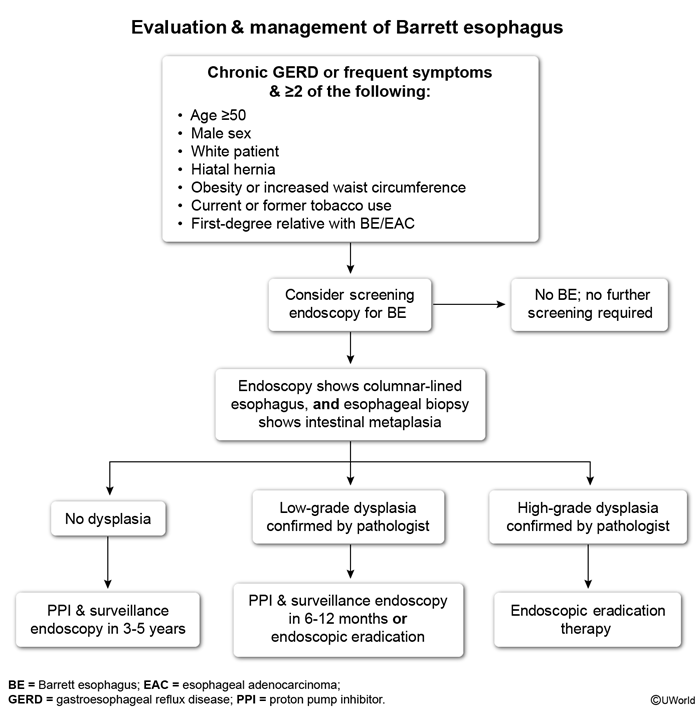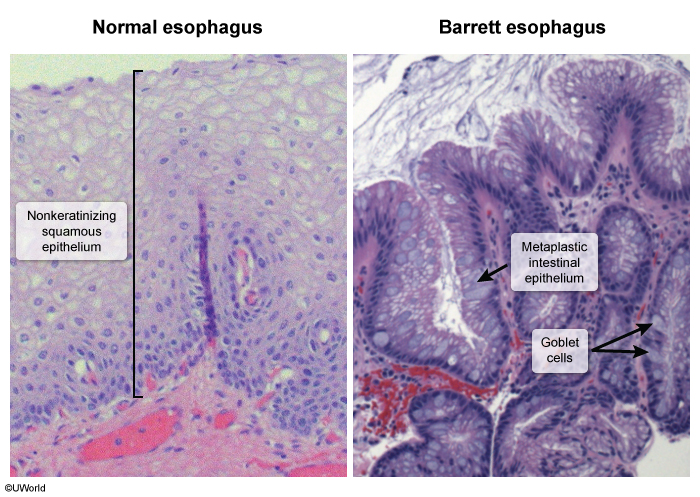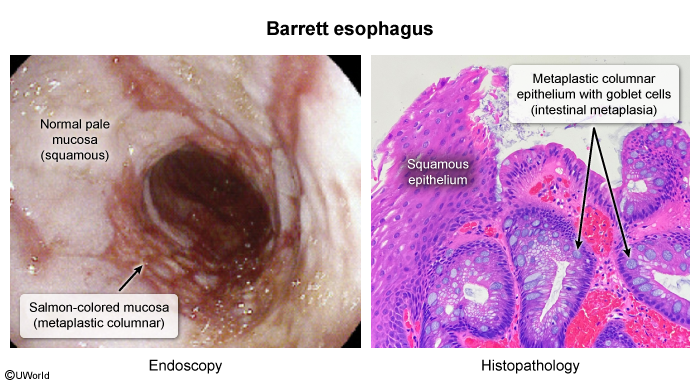Barrett Esophagus
Article Sections
Introduction
Barrett esophagus is a pathologic alteration of the distal esophagus lining in which the normal stratified squamous epithelium is replaced by a specialized columnar epithelium. This condition is strongly associated with chronic gastroesophageal reflux disease (GERD) and markedly increases the risk for esophageal adenocarcinoma compared to the general population.
Pathophysiology and risk factors
The development of Barrett esophagus is closely related to persistent acid reflux, in which repeated exposure to acidic gastric contents leads to chronic inflammation and epithelial injury in the lower esophagus. Over time, the damaged squamous epithelium is replaced by more acid-resistant, intestinal-type columnar cells (Image 1). Although this metaplasia may initially be an adaptive response (ie, intestinal-type epithelium is more resistant to gastric acid), it carries a heightened risk for malignant transformation, ultimately giving rise to esophageal adenocarcinoma. The overall annual cancer risk is low (0.3%-0.5%), although the likelihood varies with the degree of dysplasia (discussed later).
Continue Learning with UWorld
Get the full Barrett Esophagus article plus rich visuals, real-world cases, and in-depth insights from medical experts, all available through the UWorld Medical Library.
Figures

Images

